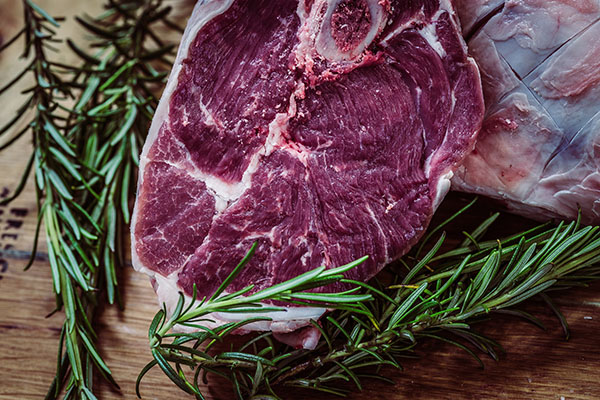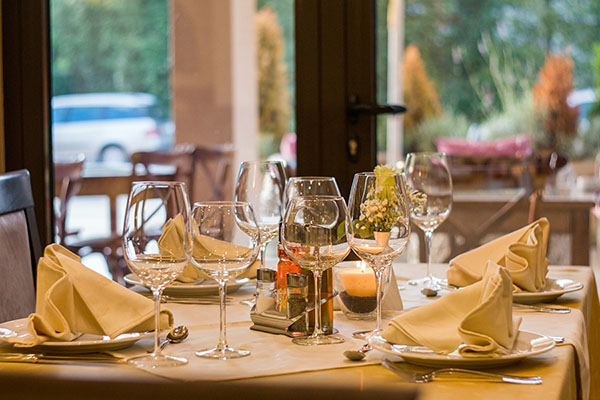Fine dining allows us to break away from the more casual settings and take part in a more formal affair. It is also known as white tablecloth dining, and typically takes place in an upper-class establishment that has a strict dress code, offers a separate wine list and, sometimes, sommeliers to assist with food and fine wine pairings.
Many of the terms found on menus in these luxury dining establishments can seem somewhat intimidating to most people. Especially if you’re not familiar with this kind of experience.
Don’t get distressed, while this is not an in-depth guide to fine dining terminology, we’ll cover enough so you can start talking the talk.

Fine Dining Menus
Á La Carte
Pronounced a-la-cart, this term is used to describe menu items that are priced individually. These items can be purchased on their own instead of as a meal.
Du Jour
Pronounced do-Zhoor, this term describes something that is being served that day. For example, the Soup Du Jour would simply mean “The soup of the day”.
Prix Fixe
Pronounced pre-fiks, this French term describes a fixed or set price. This terminology is usually found on a limited menu or accompanying a course with only 3-4 options. This term is interchangeable with Table d’hote.
Table d’hôte
Pronounced table-dhot, this French term is often interchangeable with Prix Fixe, meaning a set or fixed price. It is often found on a menu that offers multi-choice meals with few options at a set price.

Fine Dining Foods
Amuse-bouche
Pronounced a-muz-büsh, this French term has a literal meaning of “entertains the mouth.” However, in fine dining, it is most typically referred to as a complimentary appetizer.
Ceviche
Pronounced suh-vee-chee, and also called cebiche, seviche or sebiche, is a South American dish typically consisting of marinated seafood or raw fish, beautifully garnished and served as an appetizer.
Carpaccio
Pronounced kahr-pah-choh, this Italian appetizer, or Hors d’oeuvre, consists of meat or raw fish that is thinly sliced and pounded flat.
Consommé
Pronounced kon-suh-mei, this dish is a clear broth soup made from a concentrated stock or bouillon. It is clarified via a process using egg whites to remove any fats or sediments from the broth.
Foie Gras
Pronounced fwä-ɡrä, this high-end dish is the liver of a specially fattened goose or duck. It is considered a luxury food and a staple of fine dining.
Compote
Pronounced kom-pot, compote is a dessert made from whole or fruit pieces in a sugar syrup. It originates from medieval Europe.
Mezze
Pronounced meh-zei. Traditionally Mediterranean, mezze is a series of small dishes served as appetizers and is meant to stimulate the appetite. It is also commonly served in parts of the Middle East, the Balkans, Greece, and North Africa.
Roe
Pronounced rō, this luxury food item is a mass of fully ripe eggs from a female fish and sometimes includes the ovaries. It is often served on crackers.
Kobe
Pronounced koh-bay, is a luxury beef and a high-grade Wagyu. It hails from the Tajima strain of Japanese Black cattle and is raised under strict guidelines. The beef is fatty, but rich and is considered the best beef in the world.

Fine Dining Cooking
Bleu/Saignant
Pronounced say-nyon, the direct translation from French is bloody or bleeding. It is commonly used when ordering rare steak.
Bien cuit
Pronounced ben-kui, this is a French term simply meaning well done.
Crudo
Pronounced kru-do, Italian for “raw”, this is a dish usually consisting of seafood that is often seasoned and served with a sauce.
Artisan
Pronounced ah-te-zen, this means limited quantity, and not mass produced. This means the dish is a specialty item, made by hand and is limited in stock.
Farci
Pronounced fär-see, this is a stuffing served in or on certain dishes.
Granita
Pronounced gra-ne-ta, and originally from Sicily, it is a semi-frozen dessert made from sugar, water, various flavourings or fruit.
Confit
Pronounced Con-fe, this dish is typically goose, duck or pork meat that has been cooked and preserved in its own fat and juices.

Braised
This form of cooking sees the meat seared at a very high temperature and then transferred to a closed pot with liquid, sometimes fat, and cooked at a low temperature.
Blanched
This means to cook fruit or vegetables by briefly placing them into scalding hot water, then quickly removing and placing them in ice water to stop the cooking process.
A la broche
Pronounced a-la-brawsh, this cooking method means to cook on a skewer.
Omakase
Pronounced Oh-mah-kah-say, this is a term that originates from Japan. It is simply a phrase that means “I’ll leave it up to you.” It originates from ‘trust’ and can lead to a unique dining experience.

Fine Dining Drink Terms
Vintage
This term refers to vintage wine where grapes were all (or primarily) grown and harvested in a single year.
Unoaked
This is a wine that is matured without contact to wood.
Table wine
This is a wine that is not sparkling or fortified.
Stickies
This is a variety of sweet wines.
Reserve
This is a very high-quality wine.

Magnum
This is a larger bottle of 1.5L.
Hybrid
This is a wine made with 2 or more types of grapes, sometimes from different regions.
Dry
This is a wine that is not thought of as sweet.
Cold duck
A mix of red and white sparkling wine.
Clairet
This is a wine that is somewhere between a light red or dark rosé.
Looking for more? We have tips for all types of dining and cuisine you can find below:
Find the best Restaurants in Australia
- Restaurants in Albury
- Restaurants in Alice Springs
- Restaurants in Ballina
- Restaurants in Batemans Bay
- Restaurants in Bathurst
- Restaurants in Bega
- Restaurants in Bundaberg
- Restaurants in Caboolture
- Restaurants in Cairns
- Restaurants in Central Coast
- Restaurants in Coffs Harbour
- Restaurants in Darwin
- Restaurants in Dubbo
- Restaurants in Gladstone
- Restaurants in Gold Coast
- Restaurants in Grafton
- Restaurants in Gympie
- Restaurants in Hervey Bay
- Restaurants in Lismore
- Restaurants in Mackay
- Restaurants in Maryborough
- Restaurants in Mount Isa
- Restaurants in Newcastle
- Restaurants in North Lakes
- Restaurants in Nowra
- Restaurants in Orange
- Restaurants in Parkes
- Restaurants in Port Macquarie
- Restaurants in Rockhampton
- Restaurants in Shellharbour
- Restaurants in Sunshine Coast
- Restaurants in Tamworth
- Restaurants in Taree
- Restaurants in Toowoomba
- Restaurants in Townsville
- Restaurants in Tweed Coast
- Restaurants in Wagga Wagga
- Restaurants in Whitsundays
- Restaurants in Wodonga
- Restaurants in Wollongong





